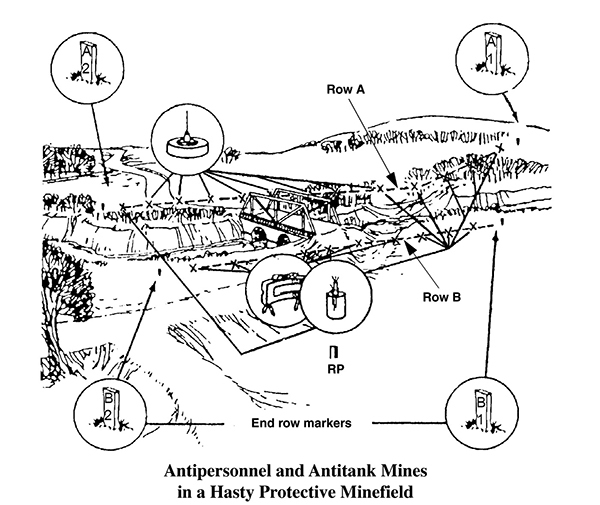Low, wide hull
6 road wheels with support rollers
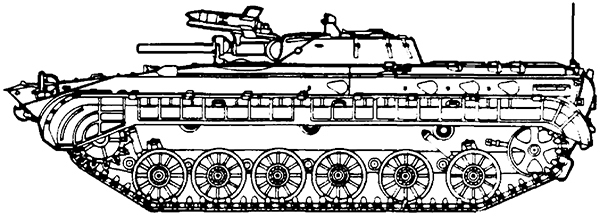
BTR 60P
May have small turret
Machine gun toward front
Large, boatlike hull with sharp, square nose
Wheeled—4 large wheels each side

BRDM
No turret
Armament may vary from pintle-mounted machine gun to antitank missiles
Long, sloping hood and raised troop compartment
4 wheels

BRDM-2
Small, cone-shaped turret, centered on hull
Machine gun mounted in turret
Square-shaped hull with distinct undercut at nose
Wheeled—2 each side
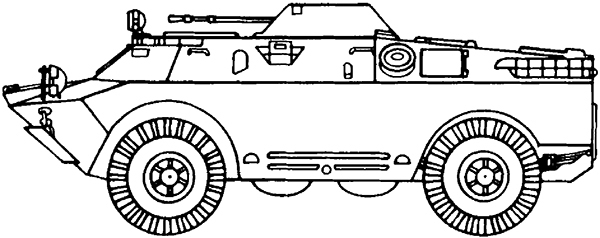
SAU 122
PT-76–type chassis with 7 road wheels
Turret location is rear of center
Infrared searchlight top left of turret
Double-baffle muzzle brake and bore evacuator
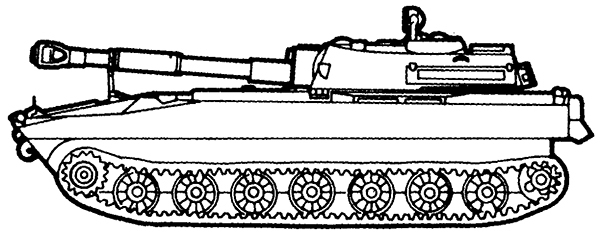
* Drawing from Alan K. Russell, Modern Battle Tanks and Support Vehicles (Greenhill Books, London, and Stackpole Books, Mechanicsburg, PA).
Appendix C
Operational Graphics
Operational graphics (map symbols) depict control measures and friendly and enemy units and equipment. These symbols are normally written on graphical overlays, which fit to the individual map scale, to help leaders better identify the battle plan and the placement of units and equipment applicable to the battle.
RULES
Operational graphics depict both the operational and support roles of the battle and have certain rules.
CONTROL MEASURES
All control measures (obstacles, locations, routes, and lines)—friendly, enemy, neutral, or factional—are drawn using the color green.
All other friendly graphic control measures are shown in black. Enemy graphic control measures are shown in red. If red is not available, they are drawn in black with a double line or the abbreviation “ENY” placed in at least two locations to avoid confusion. If colors are used to show friendly or enemy (hostile factions), they must be shown on the overlay in a legend describing what each color means.

UNIT AND EQUIPMENT SYMBOLS
Unit and equipment symbols are composed of three components: a frame (geometric border), fill, and icon. Frames are geometric shapes used to display affiliation. The basic affiliation categories are friendly, unknown, neutral, and enemy. The unknown unit frame shape is normally used only for aircraft and ships. The frame shape for suspected friendly, enemy, or neutral is used for ground units not positively identified. The basic frame shapes for units, installations, activities, and logistics sites are shown in the following figure.
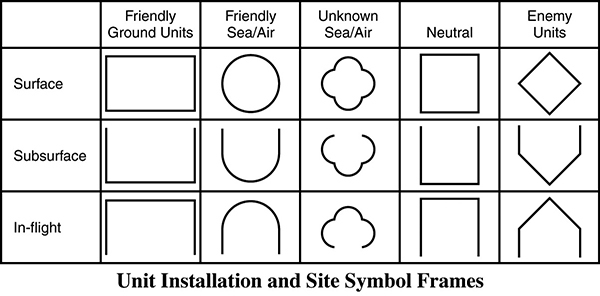
Fill refers to the area within the frame. If color is used in a symbol, it indicates affiliation. Generally, black is used for the frame, icon, and modifiers when symbols are displayed on a light background. White is used for these elements when they are displayed on a dark background. A color fill can be used if an icon is displayed within the area of the frame. The figure on the previous page shows the color defaults for affiliation used for hand-drawn and computer-generated symbols.
The icon is a “role indicator” that shows the warfighting function the unit performs either on the ground, in the air, or at sea. An example is the crossed rifles, which represent an infantry unit.
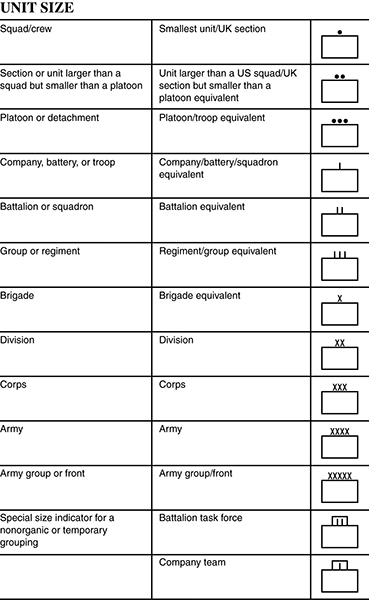
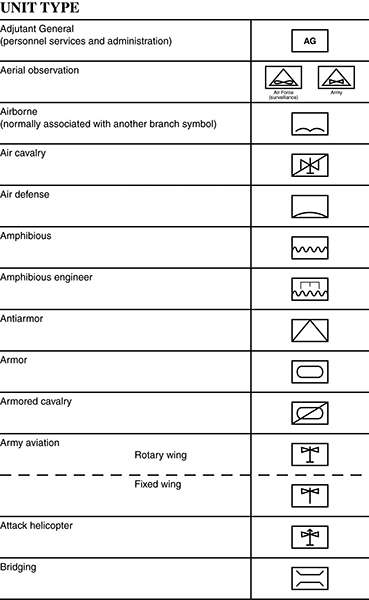

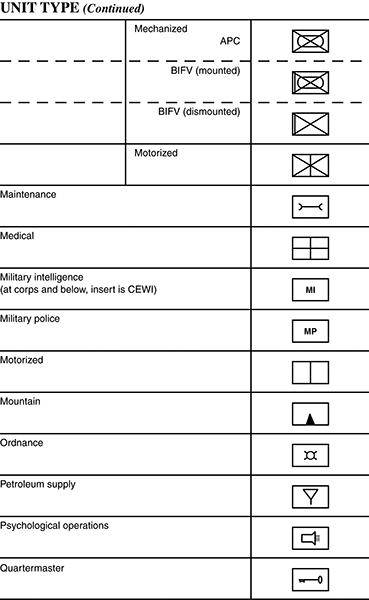
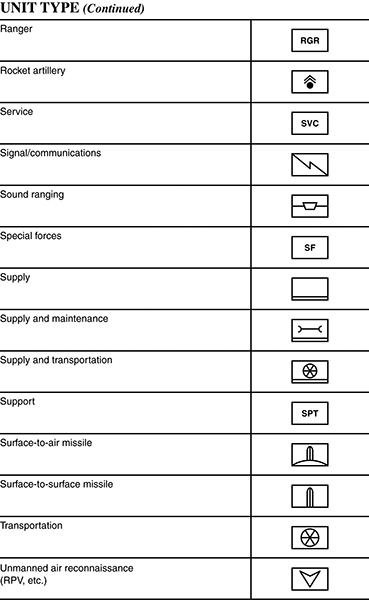
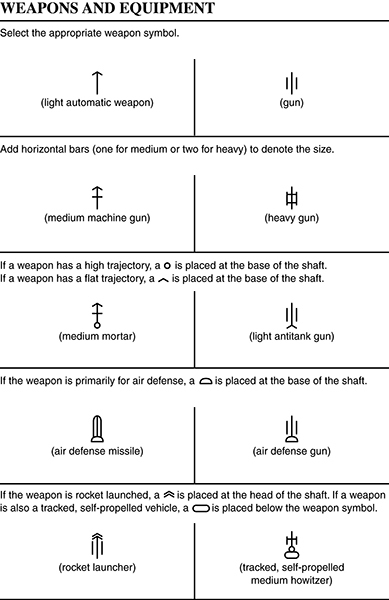
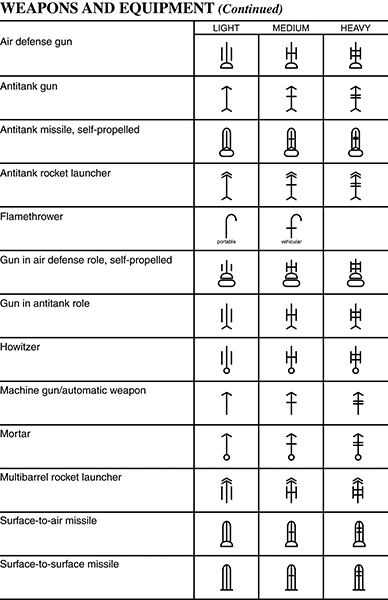
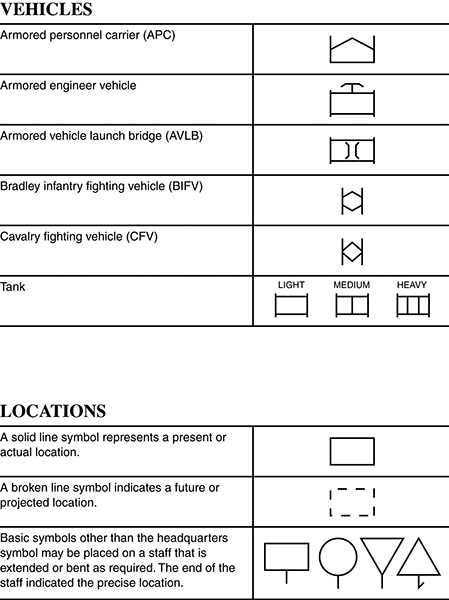
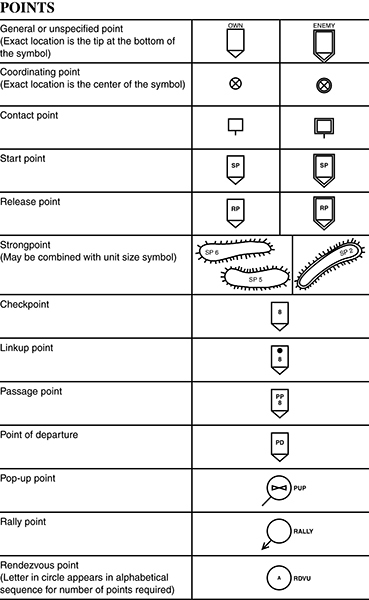
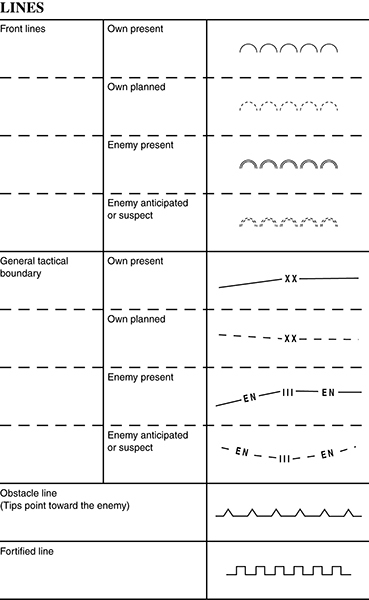
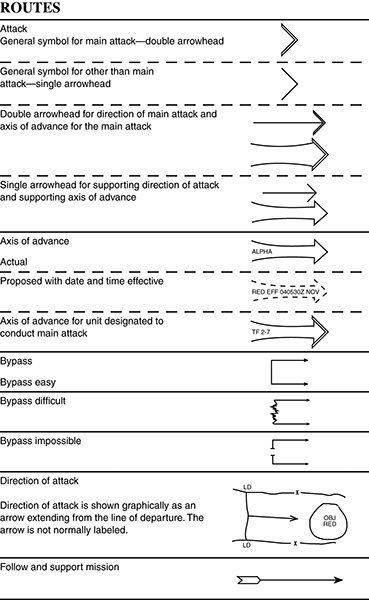
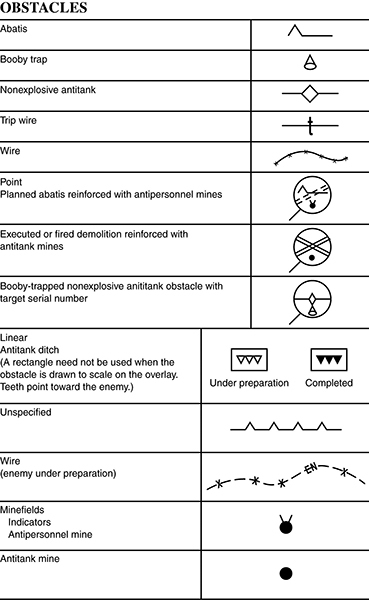
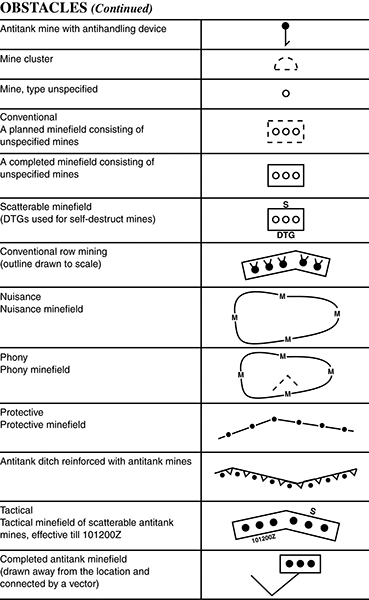
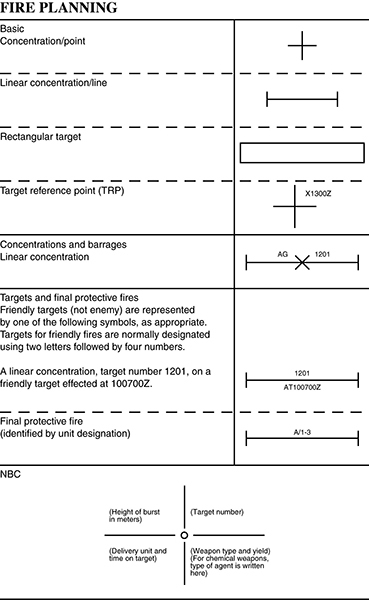
Appendix D
Minefields and Minefield Recording
Mines are one of the most effective tank and personnel killers on the battlefield. Minefields that an infantry platoon or squad most commonly emplace are the hasty protective, point, and phony.
US policy regarding the use and employment of antipersonnel land mines (APLs) outlined in this guide is subject to the Convention on Certain Conventional Weapons and executive orders. Current US policy limits the use of non-self-destructing APLs to (1) defending the US and its allies from armed aggression across the Korean demilitarized zone and (2) training personnel engaged in demining and countermine operations. The use of the M18A1 Claymore in the command-detonation mode is not restricted under international law or executive order. Note, however, that some countries employ antihandling devices (AHDs) on antipersonnel (AP) mines, but US forces are not authorized to employ AHDs on any type of AP mine.
HASTY PROTECTIVE MINEFIELD
In the defense, platoons and squads lay hasty protective minefields to supplement weapons, prevent surprise, and give early warning of enemy advance. A platoon can install hasty protective minefields, but only with permission from the company commander. Hasty protective minefields are reported to the company commander and recorded on DA Form 1355-1-R, Hasty Protective Row Minefield Record.
The leader puts the minefield across likely avenues of approach, within range of and covered by his organic weapons. If time permits, the mines should be buried to increase effectiveness, but they may be laid on top of the ground in a random pattern. The minefield should be recorded before the mines are armed. The leader installing the minefield should warn adjacent platoons and tell the company commander of the minefield’s location. When the platoon leaves the area (except when forced to withdraw by the enemy), it must remove the minefield or transfer responsibility for the minefield to the relieving platoon leader.
